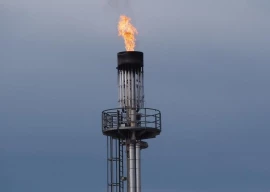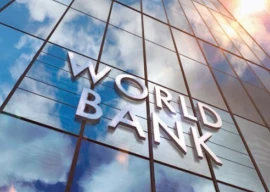
However, it emphasised that the country would make significant progress on achieving the targets set for the 2019-24 period, including putting the country's debt on a downward path.
Headed by Pakistan Tehreek-e-Insaf (PTI)'s former finance minister Asad Umar, the National Assembly Standing Committee on Finance took a briefing on the government's debt management strategy.
"We may not be able to meet all the medium-term debt strategy targets due to current high debt levels but we will make significant progress towards achieving these goals," stressed Abdul Rehman Warraich, Director General of Debt Policy Coordination Office of the Ministry of Finance.
Economic woes mount as debt, deficit stay high
The committee had a heated discussion on the continued absence of Adviser to Prime Minister on Finance Dr Abdul Hafeez Shaikh from its meetings. Asad Umar agreed, in principle, that attending standing committee meetings was in the interest of all the ministers, but said there had been precedents where finance ministers in the past did not attend meetings.
"We are trying to bring perfect democracy only in the standing committee on finance and I do not agree with that," remarked Umar, who himself had hardly missed any committee meeting as the finance minister.
However, PPP's Hina Rabbani Khar strongly pushed the demand for binding the finance adviser to attend the committee meetings.
Key objectives of the medium-term debt strategy were to have a longer-maturity debt profile, increase borrowing at fixed interest rates, enhance the share of concessionary financing and reduce exchange rate shocks, said the director general of Debt Office.
Total public debt stood at 80.4% of GDP by the end of June 2019, which the government wants to cut to 66.5% by 2024. The share of domestic debt in the total public debt was 66%, which the government seeks to slash to 59% in five years.
The DG said the external debt portfolio was "pretty in line with the target but the government wants to reduce its reliance on commercial bank loans". The share of commercial bank loans in the total external public debt was 18%, which the government wants to reduce to 12% in five years.
"We believe that over the longer run the external debt should not be more than 30% but considering the huge external financing needs, the external debt ratio is going to worsen a little bit," said the DG Debt Office.
"The share of external debt will also rise because of low levels of foreign exchange reserves, which will be built by taking external loans," said Umar.
Pakistan's debt to rise to over 78% of GDP: IMF
Responding to a question, the DG Debt Office said the external public debt would go up by $14 billion in the current fiscal year whereas gross financing inflows were estimated at $21 billion.
The external public debt stood at $84 billion at the end of previous fiscal year on June 30, 2019, according to the SBP statistics. This may now go up to $98 billion by June 2020.
The total external debt stood at $106 billion at the end of previous fiscal year, which included $84 billion of public debt.
"The debt management strategy looks very good but the underlying assumptions are very unrealistic, therefore, these targets will be missed," remarked Pakistan Muslim League-Nawaz (PML-N)'s Dr Ayesha Ghaus Pasha.
The debt maturity profile improved significantly in the previous fiscal year due to the re-profiling of central bank debt, said the DG. "Over the next five years, we will be able to improve the maturity profile but we will not be able to meet the target," he added.
At present, the share of short-term debt in the total domestic debt is 27%, which the Ministry of Finance wants to reduce to 20% by 2024. Similarly, the share of medium-term debt of one to five years is 30%, which the ministry wants to keep at the current level.
The share of long-term debt (more than five years) is 44%, which the government seeks to increase to 50% by 2024.
The DG Debt Office said the government desired to increase the share of fixed-interest debt in the total domestic debt from the current 45% to 53% over the next five years.
When the PPP's Syed Naveed Qamar objected to taking loans at fixed rates at a time when the rates were too high, the DG Debt Office said due to a high interest rate environment, the government did not have a plan to heavily rely on fixed-interest loans for two years.
The DG said the government wanted to increase the share of Islamic financing from 1% to 10% over five years but due to the problem in identifying the assets to be placed as collateral, it would be hard to achieve the target.
Overall, the PTI government was projected to add Rs19.3 trillion to the public debt in its five-year term, which would be equal to 80% of the debt piled up in the past 71 years, and the debt would remain at unsustainable levels, showed figures of the Ministry of Finance.
The public debt, which was at Rs24.2 trillion or 72.1% of GDP at the end of PML-N government's term, would surge to Rs43.5 trillion or 70.1% of GDP by 2022-23, showed figures of the Ministry of Finance.
There will be an increase of Rs19.3 trillion or 80% in the public debt during its five-year term as compared to the debt level left behind by the PML-N. Over 31% addition to the public debt during the PTI tenure has been on account of rupee depreciation.
Published in The Express Tribune, October 26th, 2019.
Like Business on Facebook, follow @TribuneBiz on Twitter to stay informed and join in the conversation.


















COMMENTS
Comments are moderated and generally will be posted if they are on-topic and not abusive.
For more information, please see our Comments FAQ